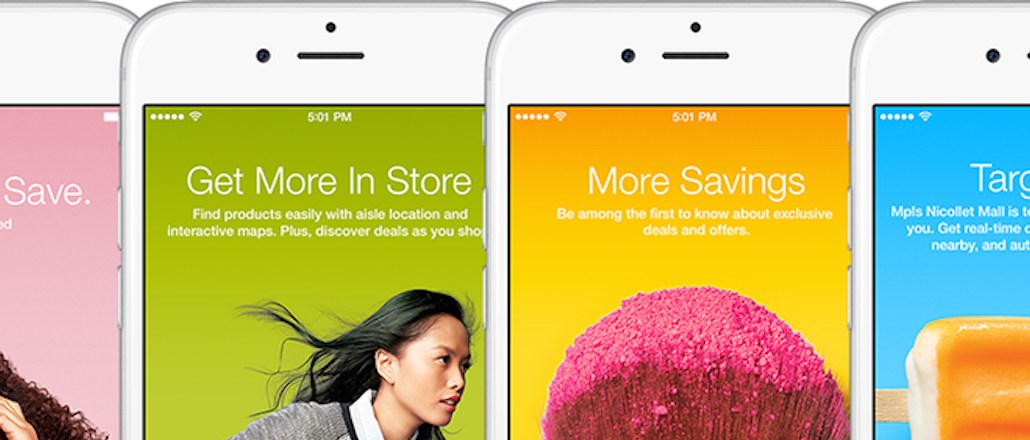
The holiday shopping season is upon us — according to National Retail Federation data, 57 percent of consumers have started making purchases — and Target is among the retailers figuring out how to optimize the time consumers spend looking at their phones as they shop.
Target’s mobile strategy is two-fold, according to spokesman Eddie Baeb, in order to capture customers’ attention outside of the store, as well as facilitate easier in-store navigation.
“Inspiration on mobile is becoming more and more important as a resource and tool, and we’re also making mobile a bigger, more useful part of the in-store shopping experience,” said Baeb.
This year, two mobile features new to the holiday season are meant to enable personalized research capabilities, as well as drive Pinterest-like inspiration. On Target’s mobile website, users can now “like” products by tapping a little heart (familiar behavior for Instagram, and now Twitter users). The heart function saves products for future reference, and tells Target what you’re interested in. Recommended products will then become more customized to reflect items similar to the liked items, something Baeb calls a “smarter, second set of recommendations” on top of the already existing recommended product section.
Since its rollout in September, 1 million Target products have gotten the heart-tap. Baeb added that all of the data collected from the feature can then be sent to Target’s desktop store.
Target’s not just pulling inspiration from Instagram’s hearts, it’s also building on the Target Awesome Shop that it introduced at the end of 2013, a mobile product that provides a Pinterest experience by integrating what’s trending on the social tool, alongside top rated products. New this year is user generated content meant to show what’s popular by region.

“More of our traffic is becoming mobile, and we want more of our checkouts to go the same way,” said Baeb. According to Baeb, Target’s digital sales to date in 2015 are up 29 percent over last year (Target doesn’t break out its mobile from its online sales). Baeb said that right now, mobile traffic is driving traffic growth — this year, it’s expected to account for 70 percent of all digital traffic — and in 2014, mobile sales on Black Friday doubled what they were in 2013.
He added that the goal is two-tap mobile checkout, and said that the Awesome Shop is currently shoppable and that Target’s seen an “incredible lift” in mobile conversion, although he couldn’t specify the exact lift.
In store, Target has been making efforts to enhance its sprawling, big-box experience by leveraging mobile. In August, the retailer rolled out beacon technology in 50 of its stores, adding an in-store “Target Run” feature that changes its feed of announcements and offers depending where customers are in store. Then, Baeb said that the company hoped to adapt the beacon technology as quickly as possible in order to expand it to all locations before the end of the year; however, he said Tuesday that the beacons are still in the learning phase and won’t be in use in all stores for the holidays.
Still, all Target customers can navigate their local stores by using a new feature on their phones that relays only what’s in stock in the store they’re in. For Black Friday, Target will build on its interactive in-store maps, making it possible for customers to navigate deals, learn more about the featured on-sale products, and purchase them on their phones in store in order to avoid long lines.
National Retail Federation data shows that mobile is set to play an important role in all phases of the holiday shopping experience. A survey found that 22 percent of shoppers planned to purchase on mobile during the season, the highest since NRF began asking the question in 2011. Thirty-eight percent of shoppers said they’ll be using smartphones to research purchases, and 20 percent will use them to look up product availability in store.
At top Target competitor Amazon, mobile sales doubled during the holidays in 2014, and expectations are high for 2015 as the company plans to offer mobile push notifications for deals and app-only sales to drive conversion.
For those who want to look up from their smartphones as the holidays approach, Target will also be hosting a live “Holiday Odyssey” experience in New York City, starting December 9.
More in Marketing

The Disney-OpenAI deal and generative AI copyright concerns
This week’s Digiday Podcast delves into the copyright concerns and potential trademark issues surrounding brands’ use of generative AI tools, with Davis Wright Tremaine partner Rob Driscoll.

‘There’s tremendous opportunity’: NBA sponsorships lead on European expansion
David Brody, vp, global partner management group lead at the NBA, explains its pitch to sponsor brands and how expansion isn’t far off.

New partnerships, marketing fuel BNPL’s holiday surge
This holiday season, more brands deployed BNPL services with different payment options beyond the more familiar “pay-in-four” structure.





